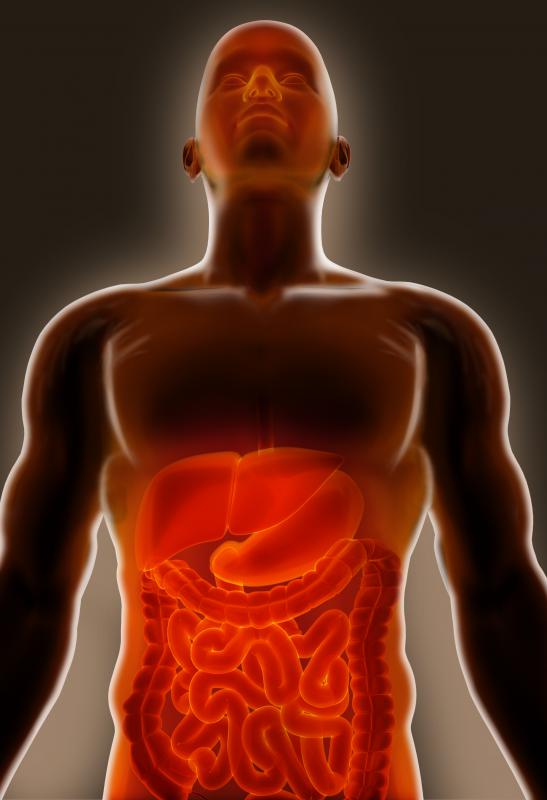At WiseGEEK, we're committed to delivering accurate, trustworthy information. Our expert-authored content is rigorously fact-checked and sourced from credible authorities. Discover how we uphold the highest standards in providing you with reliable knowledge.
What is the Celiac Trunk?
The celiac trunk, also known as the celiac artery, is a major blood vessel of the abdominal cavity. Splitting off from the abdominal aorta, the portion of the descending aorta that supplies oxygen-rich blood to the structures of the torso found below the diaphragm, this artery distributes blood to the organs of the foregut. These organs, which are largely involved in the digestion of food, include the lower esophagus, stomach, liver, spleen, and the upper portions of the pancreas and duodenum, the first section of the small intestine.
This vessel’s origins correspond with the bottom of the thoracic spine, branching off from the anterior aspect of the abdominal aorta at the height of T12, the lowest thoracic vertebra. Projecting forward and slightly downward from the front of the abdominal aorta in the very center of the torso, the celiac trunk soon splits into its respective branches: the left gastric artery, the common hepatic artery, and the splenic artery. The left gastric artery branches upward and supplies the top portion of the stomach along its lesser curvature, as well as the lower esophagus. Branching to the right is the common hepatic artery, which brings blood to the liver, the pylorus at the bottom of the stomach, the pancreas, and the duodenum. Running in the opposite direction is the splenic artery, which delivers blood to the spleen.

As with the other two branches of the anterior abdominal aorta, the superior and inferior mesenteric arteries, the celiac trunk does not interlink, or share connections, much with the other arteries of the abdominal cavity. This means that very little perfusion could occur, or the spreading of oxygenated blood to the capillary beds of the organs that this vessel supplies, if blood flow from it were cut off. In other words, the blood flow from this artery is necessary to the continued function and survival of the organs in the foregut.

Similarly, the celiac trunk does not have a corresponding celiac vein that returns deoxygenated blood from these organs to the heart, as do most arteries. This blood instead travels to the liver by way of the portal venous system, a system of capillaries that drain used blood from the digestive organs to the liver for waste removal. Once the liver does its job, it cycles the blood back to the heart via a large vessel known as the inferior vena cava, where it will be pumped back into the lungs to receive oxygen once again.
AS FEATURED ON:
AS FEATURED ON:














Discuss this Article
Post your comments